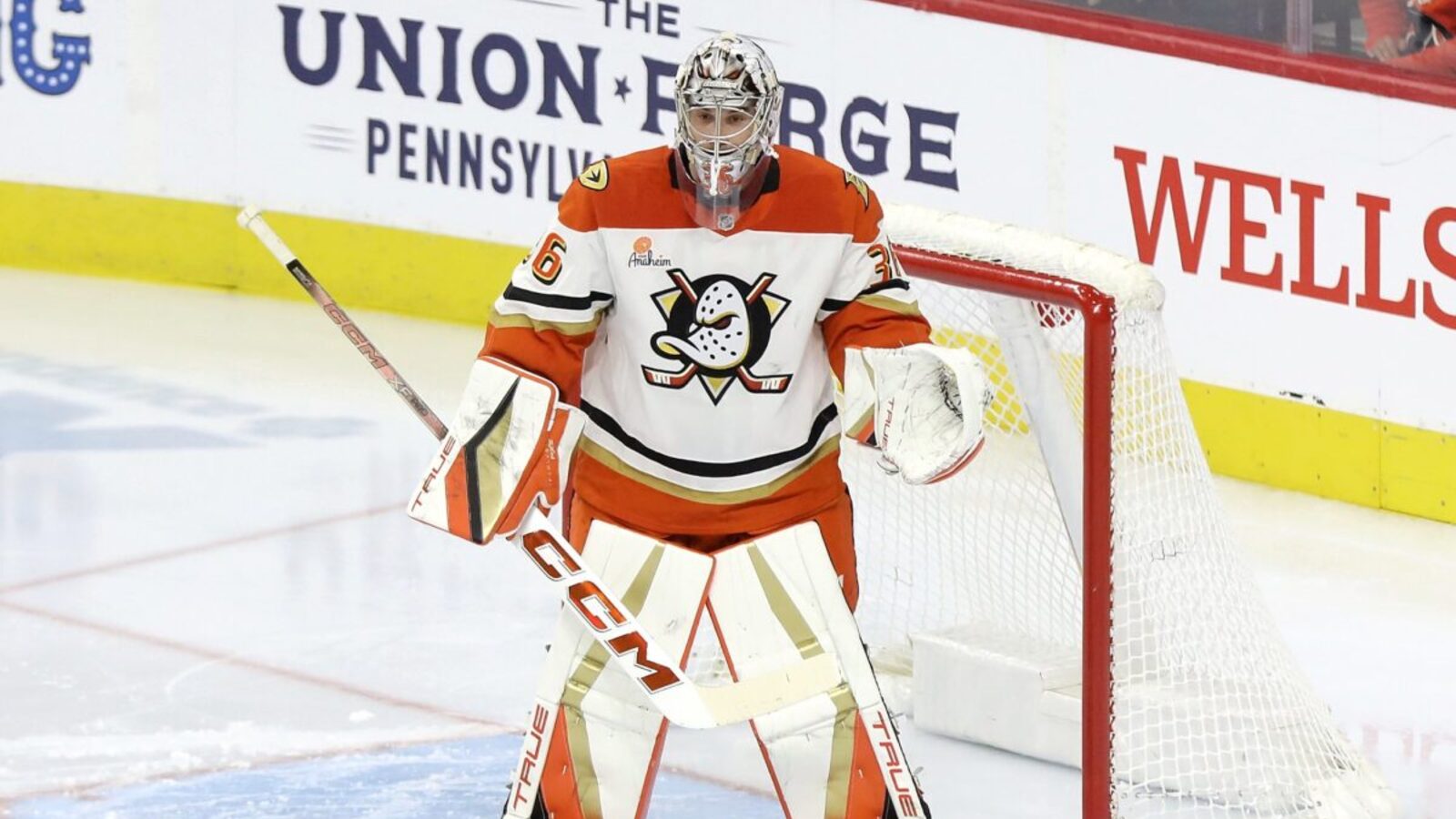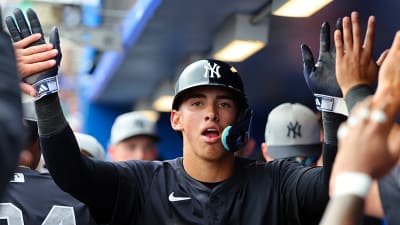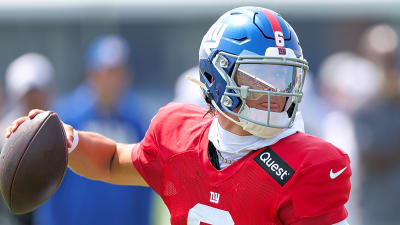
The Detroit Red Wings have been searching for stability in net for the better part of a decade. Since the days of Jimmy Howard, the Red Wings have had a rotating cast of stopgaps, hopeful reclamations, and short-term solutions in goal. But when general manager Steve Yzerman traded for John Gibson this offseason, it seemed different. This isn’t a band-aid. It’s a bet.
Gibson arrives in Detroit with a resume most goalies would envy – three All-Star appearances, years of carrying a depleted Anaheim Ducks roster, and the kind of raw talent that once had him pencilled in as the future of American goaltending. But he also brings baggage, including a string of injury-riddled seasons, declining numbers, and questions about whether his best days are already behind him. Still, the upside? It’s real. The fit? Surprisingly, it might be perfect.
Gibson Built for the Moment
Gibson’s time in Anaheim was defined by volume. Season after season, he faced a barrage of shots behind a porous blue line, forced to be the Ducks’ saviour on most nights. That wasn’t sustainable. What Detroit offers him is structure. Under head coach Todd McLellan’s system, the Red Wings emphasize smart positioning, puck support, and limiting odd-man rushes. It’s not a lockdown defence yet, but it’s trending upward.
John Gibson has been Traded to the Red Wings in Exchange for Petr Mrazek and 2nd Round Pick, and a 4th Round Pick pic.twitter.com/HJLhZ42y5n
— The Hockey Podcast Network (@Hockeypodnet) June 28, 2025
For the first time in years, Gibson won’t have to stand on his head to keep his team in games. He can just… play goal. When he’s healthy and confident, he’s still capable of stealing games. His reflexes are elite. His lateral movement remains crisp. He reads plays exceptionally well when he’s not overextended. If Detroit’s defensive growth continues, Gibson could thrive as a stabilizer – less superhero, more backbone.
Gibson’s Age and Timeline
At 32, Gibson isn’t a long-term prospect. He’s not Sebastian Cossa, still developing in the American Hockey League with the Grand Rapids Griffins. He’s a proven veteran with mileage. That’s exactly what the team needs right now.
Detroit’s core in Dylan Larkin, Lucas Raymond, Moritz Seider, Alex DeBrincat, and others are in their mid-20s and ready to win. They don’t need a five-year plan in net. They need a goaltender who can give them two to three seasons of solid play while the rest of the puzzle comes together. If Gibson stays healthy and avoids workload burnout, he could buy Detroit the exact amount of time it needs for Cossa to mature into a true starter. But if Cossa never quite becomes that guy, then maybe Gibson becomes more than a bridge.
Risk vs. Reward
There are obvious concerns. His goals-against average has hovered above 3.00 for several years. If injuries return or his confidence dips, Detroit could be right back at square one.

But the upside is hard to ignore. The Red Wings aren’t bringing in a mystery box; they’re betting on a known talent rediscovering his form in a better environment. That’s a risk Yzerman has made before, and more often than not, it’s paid off.
Red Wings Don’t Need Perfection
So, is Gibson the long-term answer in net? Maybe not in the traditional sense. He’s not the next 10-year starter in Hockeytown. But is he the answer right now? Absolutely.
Detroit doesn’t need perfection; it needs reliability. They need someone who can hold the line while the team around him grows up, finds its rhythm, and learns how to win together. Gibson, with all his experience and all his upside, might just be the wall the Red Wings have been missing. In a league where the margin between playoffs and heartbreak is razor-thin, that kind of presence between the pipes could be the difference.
More must-reads:
- 25 great NHL teams that somehow didn't win the Stanley Cup
- Mets to promote top pitching prospect for MLB debut
- The '2023 NFL AP second-team All-Pro' quiz
Breaking News
Trending News
Customize Your Newsletter
 +
+
Get the latest news and rumors, customized to your favorite sports and teams. Emailed daily. Always free!








